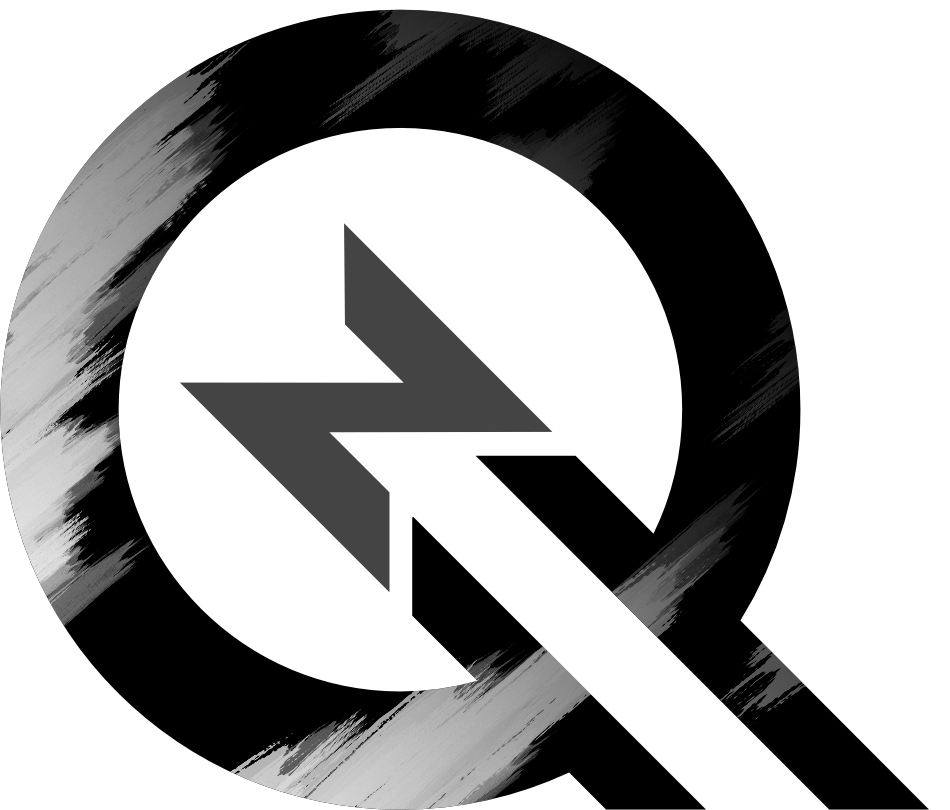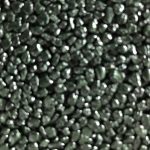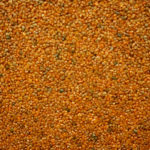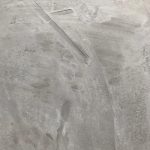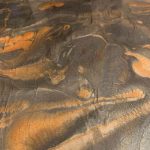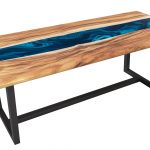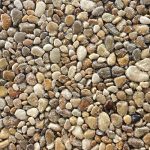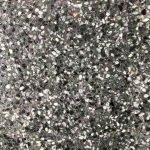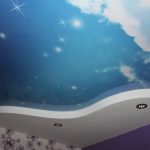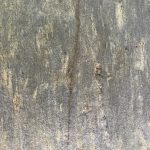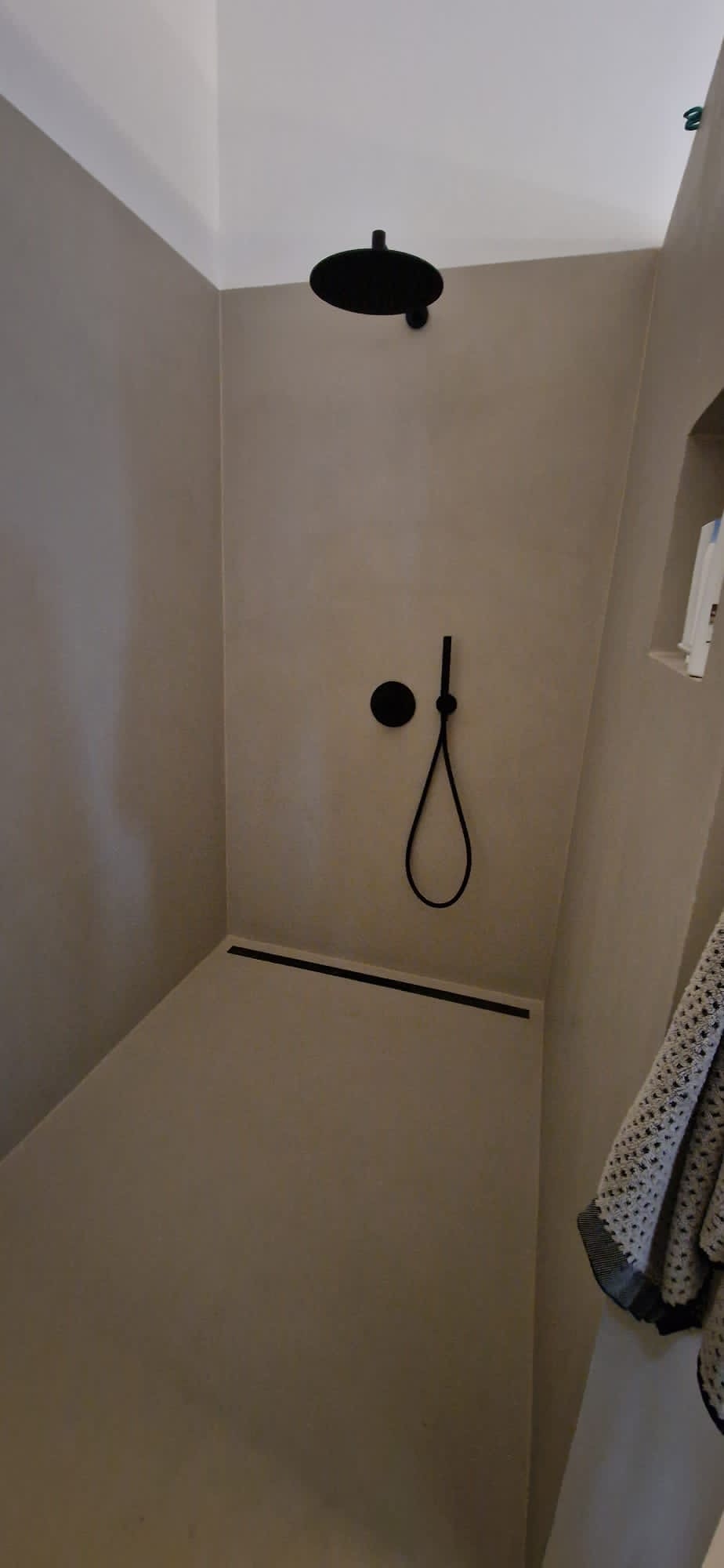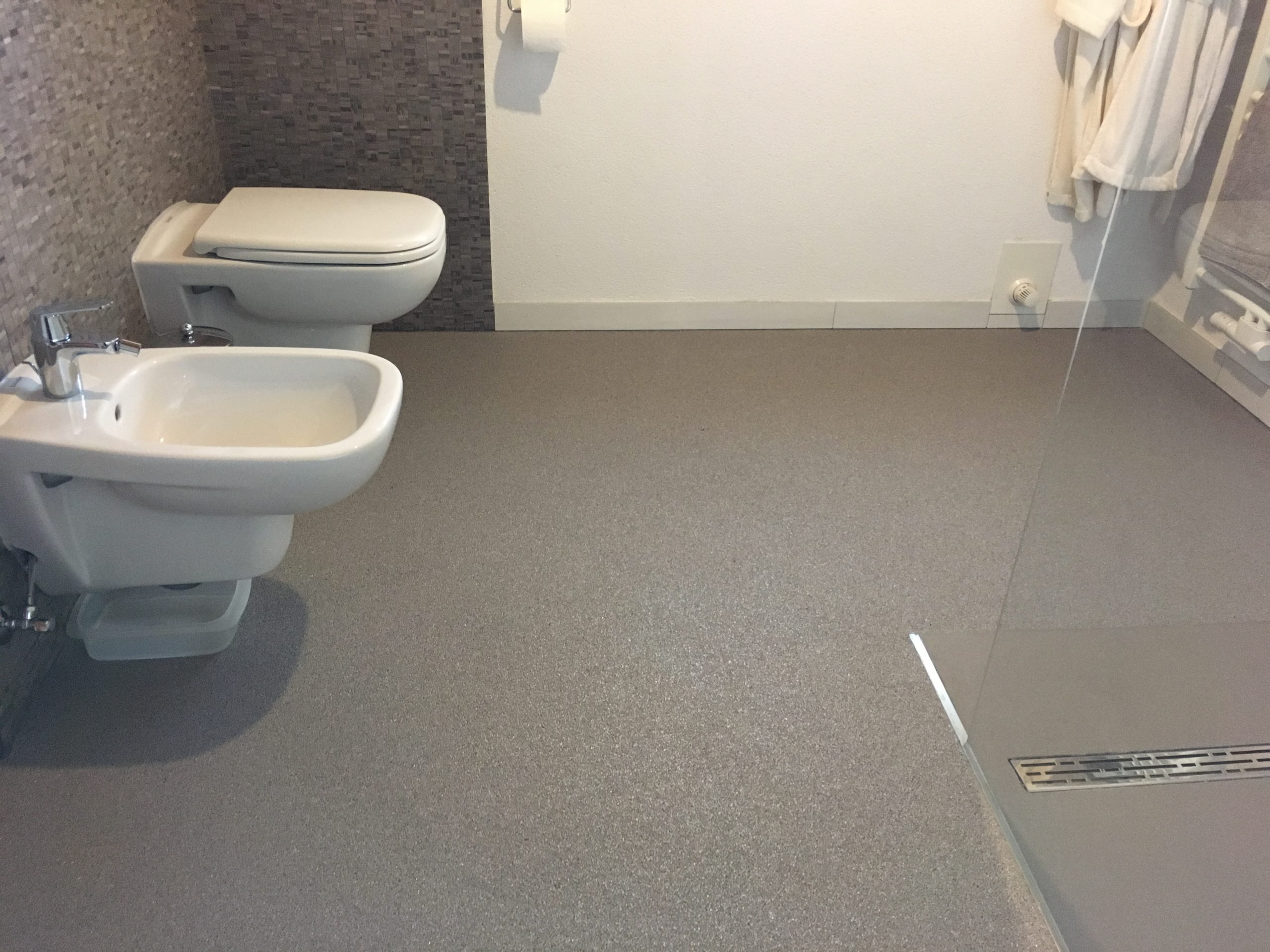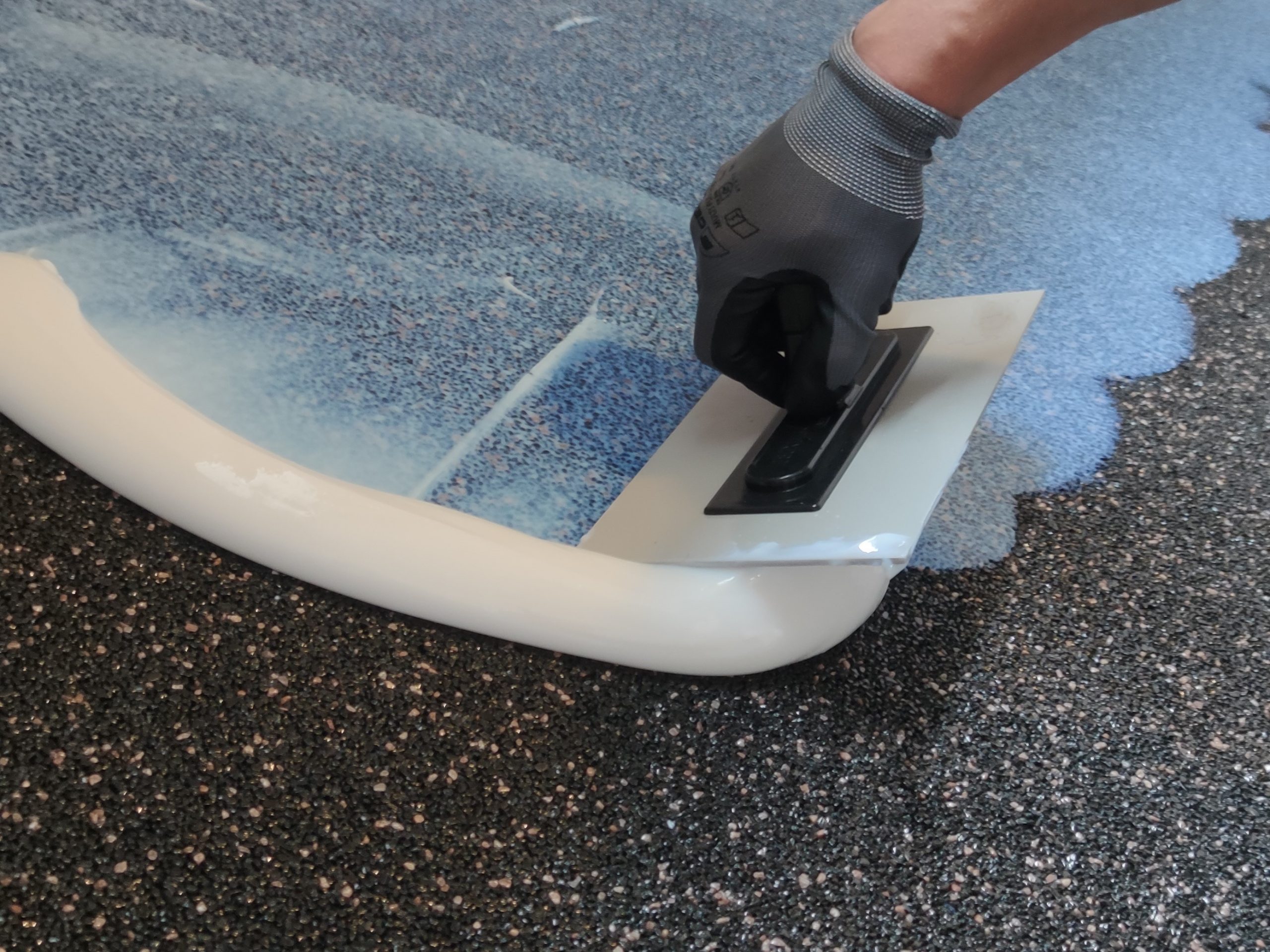Concrete look is a style that is characterized by its striking and modern appearance. It gives rooms a cool, contemporary atmosphere and is often used in interiors and in the design of furniture and accessories.
Contents
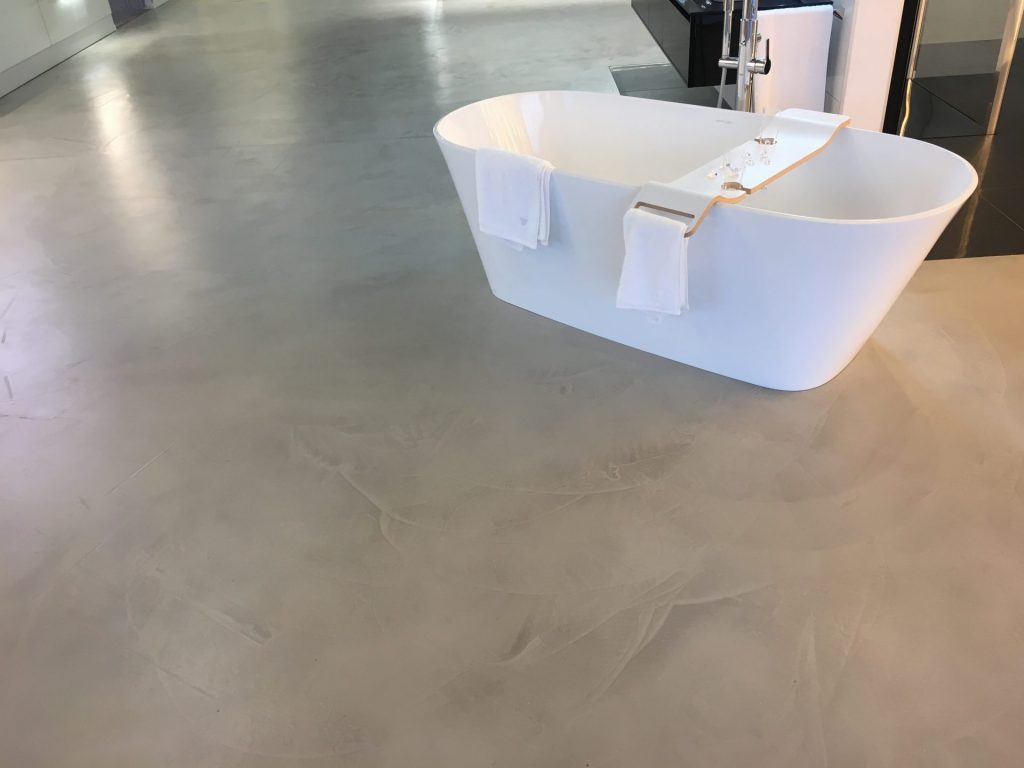
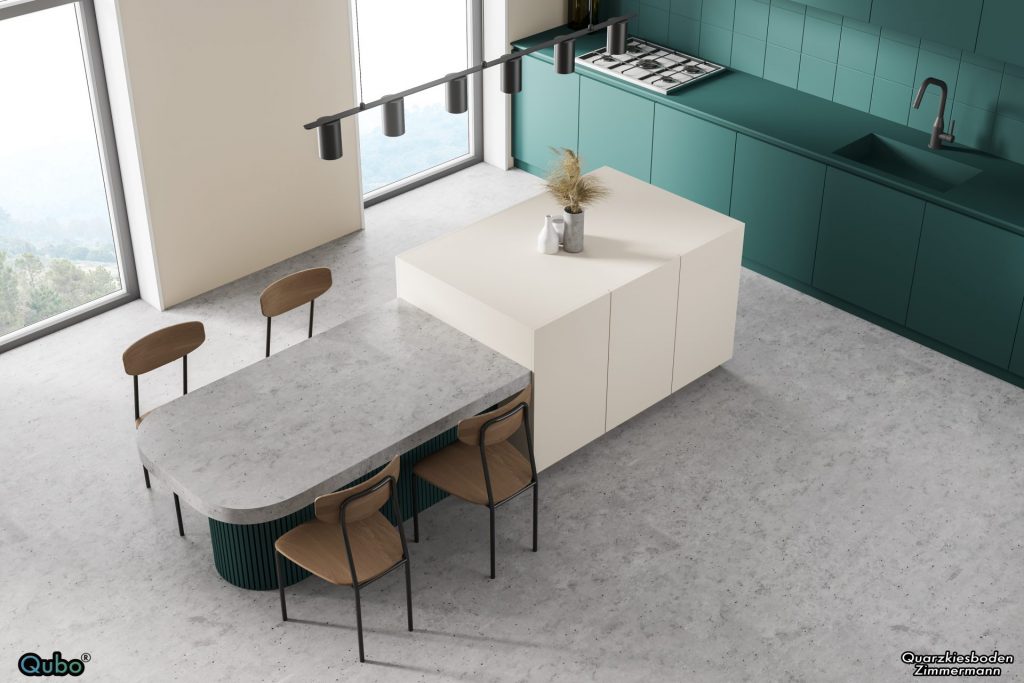
Concrete look - an absolute trend in interior design The fascination with concrete looks lies in their versatility
In the past, no one would have thought of integrating a concrete-look wall in the living room or bedroom. But today it is the latest trend in living room design. The modern and cool appearance of the concrete look allows for versatile adaptation to any furnishing style. Whether discreet with fine structures, classic in the style of exposed concrete with characteristic cavities or creative in combination with different colors or materials – the concrete look offers numerous possibilities to design living spaces individually and attractively.
Whether discreet with fine structures, classic in the style of exposed concrete with characteristic cavities or creative in combination with different colors or materials – the concrete look offers numerous possibilities to design living spaces individually and attractively. The focus here is on three important aspects:
- The concrete look must look authentic and match the design style of the room in question.
- The surfaces must be almost or completely even in order to be able to place furniture and hang pictures.
- The material must be insensitive to water, ideally even waterproof.
Properties of concrete-look floors and walls
Loft-style floors and walls are characterized by a variety of appealing features that make them popular elements in modern interior design.
Overall, concrete-look floors and walls are an extremely attractive option for those who want to combine contemporary design with functionality and durability.
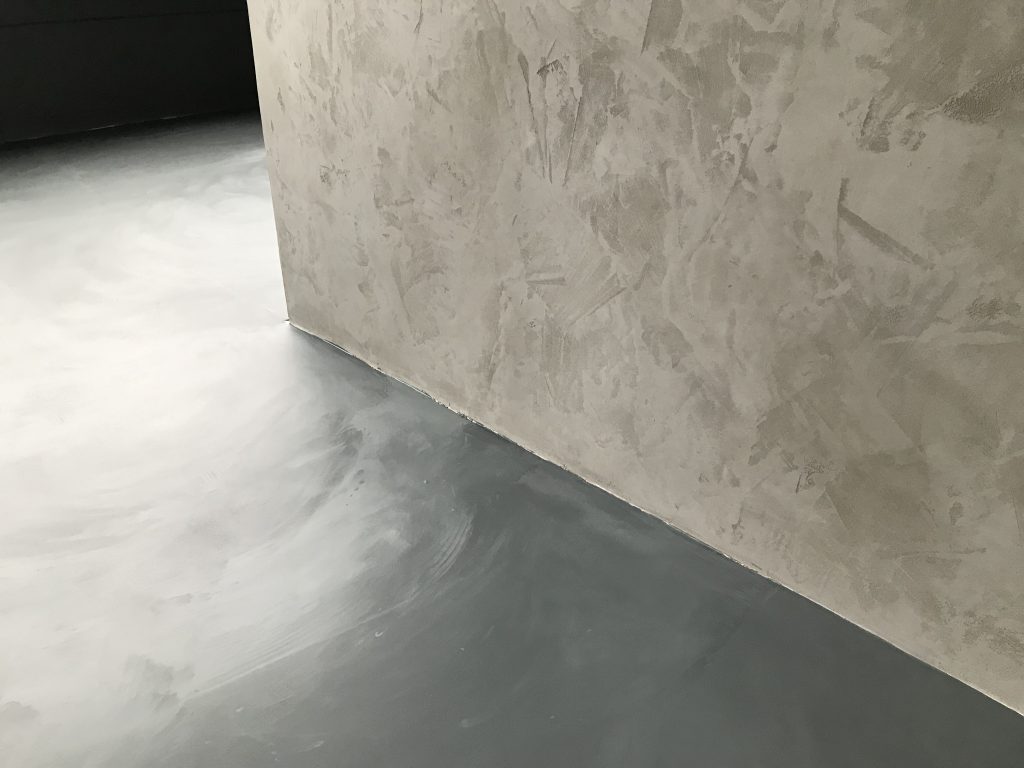
Here are some outstanding features:
- Modern aesthetics: Concrete look exudes a contemporary and modern aesthetic. The clear lines and simple surfaces lend rooms a chic and timeless elegance.
- Versatile customization: One of the biggest advantages of concrete look is its versatility. It can integrate seamlessly into different interior styles – from minimalist spaces to loft-style homes. This makes it suitable for both traditional and contemporary designs.
- Robust durability: Concrete look floors and walls are known for their robustness and durability. They are resistant to scratches, wear and stains, making them an ideal choice for high-traffic areas.
- Easy to maintain: Compared to other materials, floors and walls in exposed concrete style are easy to maintain. A simple wipe or vacuuming is often enough to keep them clean and tidy.
- Natural cooling effects: Concrete has the ability to regulate temperatures. Floors designed in this style can have a cool effect, which is particularly pleasant in warm climates. At the same time, however, they provide a neutral base that can be combined well with different color palettes.
- Creative design options: The minimalist gray tones open up creative design options. Whether in the form of individual color accents, different surface textures or in combination with other materials such as wood or metal – there are numerous ways to create a unique and personal look.
- Industrial flair: Concrete-look floors and walls often lend rooms a very special flair. This rustic charm of old production halls can be enhanced by choosing exposed concrete-like elements that emphasize the natural character of the building.
Areas of application for concrete look Designing floors and walls with a concrete look
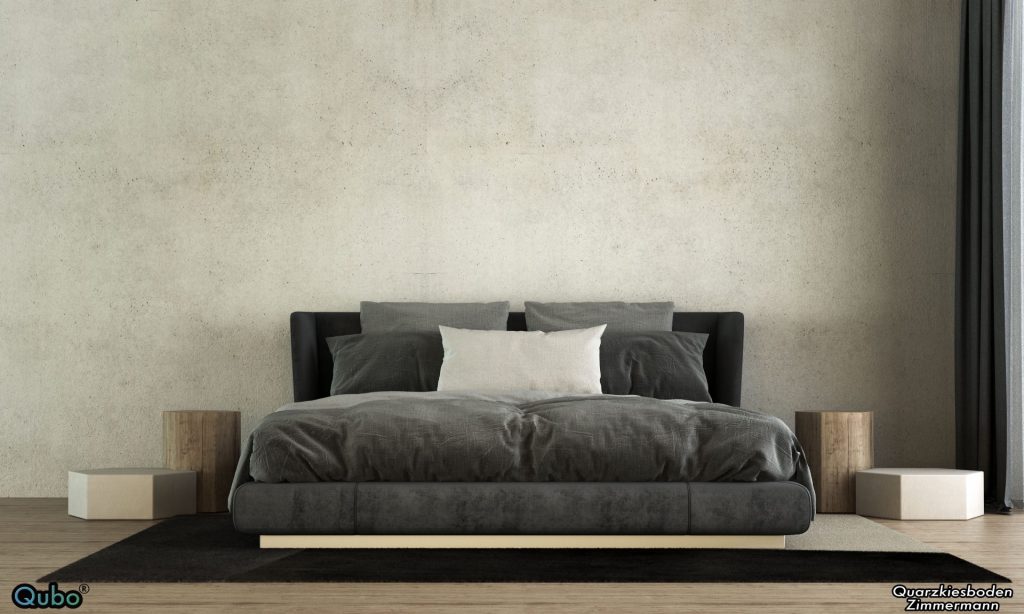
- Living rooms: The design style has become a popular trend in living rooms, bedrooms and other living areas. It gives these rooms a modern flair and offers a timeless aesthetic.
- Kitchens: Concrete looks are becoming increasingly popular in kitchen design. Appropriately designed worktops, kitchen islands and kitchen splashbacks give the kitchen a trendy look and are also easy to clean and hard-wearing.
- Bathroom: In the bathroom, a concrete look can be a stylish alternative to traditional materials such as tiles. Appropriate wall coverings create a modern atmosphere and enable a harmonious combination with other materials such as glass or wood.
- Offices and commercial spaces: Concrete looks are also increasingly finding their way into offices and commercial spaces. It gives these environments a serious touch. It is particularly popular as a floor covering as it offers the durability and ease of maintenance required in high-traffic areas.
- Gastronomy: Restaurants, cafés and bars are increasingly relying on the loft style to create a modern and appealing atmosphere. From floor coverings to wall cladding and furniture: the design concept gives restaurants and bars an urban charm.
- Exterior areas: The exposed concrete look is not only used indoors, but also for outdoor areas. Terraces, garden paths and façades can be given a contemporary and minimalist aesthetic through the use of appropriately designed elements.
- Industrial environments: In places such as warehouses or production facilities, a concrete look for floors and walls can be a robust yet modern solution. It combines functionality with an appealing design.
Whether in private living spaces, public facilities or commercial areas: The versatility of this design concept makes it possible to cater to a wide range of design preferences and styles.
- Aesthetics and modernity: concrete-look stairs exude a modern aesthetic. The clear surfaces and simple shapes go well with an urban or minimalist design.
- Versatile designs: From smooth surfaces to structures with visible indentations – there are numerous options for adding an individual touch.
- Combination with other materials: Concrete looks can be combined excellently with other materials. Wood, glass or metal can create an interesting and contrasting design.
- Robust durability: concrete-look stairs are resistant to wear and tear, scratches and other stresses of daily use. This makes them particularly suitable for high-traffic areas.
- Easy to maintain: Compared to some other materials, concrete stairs are easy to maintain. Regular cleaning is often enough to maintain their aesthetics.
- Adaptability to different styles: The loft style harmonizes with different furnishing styles. Whether in a modern apartment, a minimalist home or an office building – concrete stairs can blend seamlessly into different environments.
- Individual design options: The variety of concrete looks makes it possible to design stairs individually. The choice of colors, surface textures and shapes enables adaptation to specific design preferences and requirements.
- Indoors and outdoors: Stairs with a concrete look can be used both indoors and outdoors. This makes them a versatile solution for designing entrances, terraces and gardens.
- Sustainability: The use of a concrete look on stairs can also take ecological aspects into account. The long durability of microcement contributes to this.
Coating stairs with a concrete look Suitable substrate for a concrete look
Thanks to the flexible application options, the entire property can be created in a concrete look if desired. This also includes stairs, as the quality products from the Qubo® brand can be applied to almost any surface, for example:
- tiles
- Parquet
- Plasterboard
- Screed
- Marble
- Natural stone
- Ceramics
- OSB boards
- Metal
- Drywall
- Wooden panels
- Plaster
Depending on the substrate, choice of material and area of application, the surface must be prepared accordingly. Your specialist installer will advise you on the necessary steps.
Creating a concrete look
Accordingly, a concrete look requires special, high-quality materials and a different, more complex working method than simple exposed concrete. For example, loft-style surfaces can be created using mineral fillers and resin-based cast floors.
This means that loft-style floors and walls are not a cheap substitute for laminate and woodchip. Rather, they are a particularly robust and durable alternative to sensitive wallpaper, painted plaster and tiles. A concrete look is an investment that pays off thanks to its high durability.
Cementitious filler to create concrete-look floors, stairs, walls and furniture
The white cement-based leveling compound Qubo® Microcement is made from mineral components—primarily calcium cement—and its excellent adhesion properties are achieved through the use of carefully selected additives. To achieve the desired concrete-like appearance, color pigments are added to this breathable material. Different shades of gray are obtained by varying the amount of pigment used and the application technique.
The cementitious filler can be applied in several layers to the desired substrate. This includes floors, stairs, walls and furniture. Each layer is sanded after drying to allow the color of the underlying layer to show through in places. Sanding poses no risk to the overall appearance, as the material is completely dyed through before laying. Very different patterns are created, sometimes appearing as clouds, sometimes as lines.
Each installer has developed their very own style, making your surface truly unique and handmade. Ask your specialist to show you sample tiles so that you can get to know the craftsman’s personal signature.
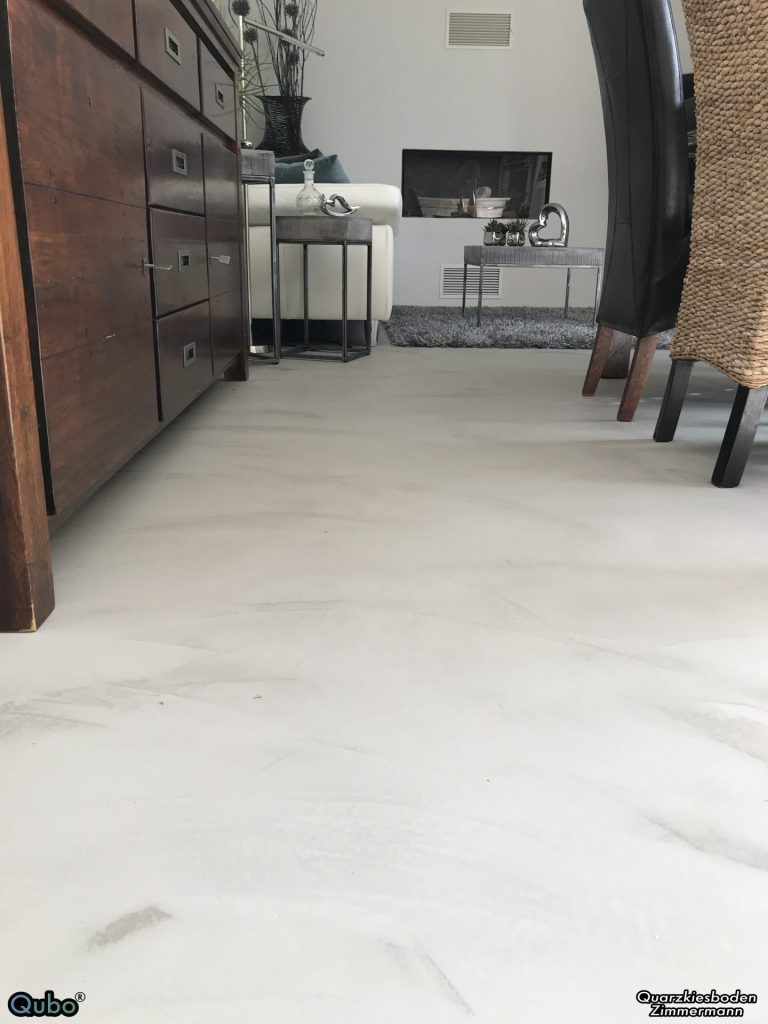

Once the design has been completed, the surface is given a protective sealant. This is waterproof and, together with the primer, ensures that the surface always looks flawless, even when wet. This means that the popular concrete look can be created in any room. In addition to the living room, bedroom, hallway, office or store, it can also be used in wet areas such as the bathroom, kitchen or sauna. Even in permanently wet areas such as showers, the cement filler creates a seamless coating for floors and walls.
The Qubo® Aqua series can also be used to design outdoor surfaces with a concrete look.
In addition to the protective effect, the choice of sealant also influences the final appearance of the surface. A protective seal can be applied in a matt or satin finish. Various functional seals also offer increased protection against scratches and an improved slip resistance class. These are particularly suitable for use in workshops or laboratories.
Creating a concrete-look cast floor Structure of a cast floor
Creating a concrete look with epoxy resin is a completely different approach. To create the popular concrete look, different colored synthetic resins are poured at the same time.
How exactly is such a cast floor constructed?
Basically, a poured floor consists of several layers. The preparation of the first layer is extremely important: as epoxy floors are self-leveling – i.e. they form a smooth, even surface on their own – the room must not have any slopes or unevenness. If in doubt, work with a leveling compound.
This is important because the resin layer itself is only 2-3 millimeters thick and even small differences in height in the screed prevent an even surface.
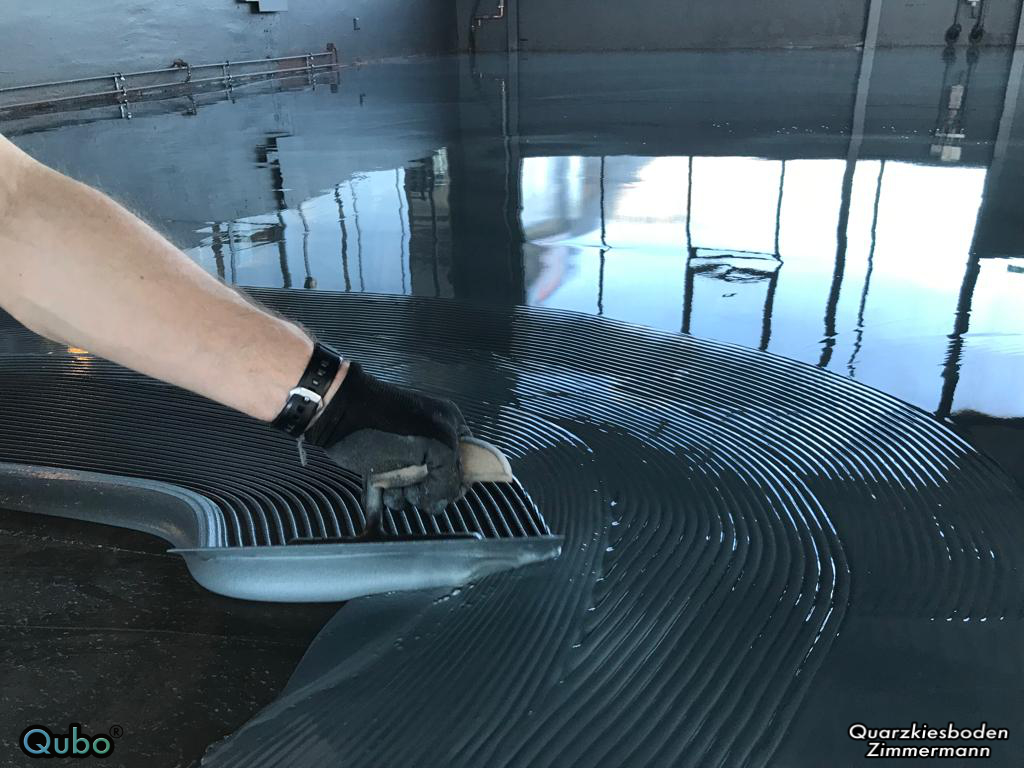
A primer is now applied as the first layer to optimally prepare the floor for the design layer. The color of the primer plays a subordinate role for concrete-look floors, as the material is heavily pigmented for the industrial look. This means it is no longer transparent.
For the design layer itself, several resin mixtures with different color pigments are mixed, poured over a large area and evenly distributed.
Care must be taken not to rework too often when spreading the epoxy – the more often areas are reworked with several colors poured into one another, the more the colors will mix. Of course, this effect may also be desired.
Once the resin layer has hardened, the final step is to seal the floor. Various design sealers are available to create a glossy, satin or matt surface. Various functional sealers are available to create a non-slip or extremely scratch-resistant surface.
Depending on the selected resin and sealing variant, a cast floor can be used in living rooms, hallways, bathrooms and offices or in workshops, doctors’ surgeries, warehouses and production areas. In the latter cases, special resins and fillers ensure a particularly high load-bearing capacity.
Lime marble plaster Textured, breathable wall design
This breathable material can also be used to create a concrete look. The lime marble plaster is applied to the wall in just one coat. The different shades of grey are created with colored glazes or a base color is mixed into the filler. Extremely individual designs can be created by using different troweling techniques and the resulting textures.
In addition to the industrial style, multi-colored wall designs and the use of metallic colors are also possible. For example, surfaces with a copper look or shiny silver walls can be created. For this reason, the plaster can be adapted to any living style.
Application and benefits of lime marble plaster
Lime marble plaster is particularly popular in rooms where a certain feel-good factor is to be created. First and foremost, of course, these are living rooms such as living rooms, dining rooms or bedrooms. But the wall coating also works wonders in stairwells, which often appear sterile and cold or are put on the back burner when renovating. In offices, the combination of a homely wall structure and a cool concrete look creates a pleasant working atmosphere.
The acrylate-based paints play another important role in addition to their design function: they give the plaster a water-repellent protective layer. This makes it suitable for use in kitchens and bathrooms, where water vapor and moisture are the norm. The diffusion-open plaster always remains hygienic and effectively prevents mold growth. A transparent wax layer can be applied as additional protection. This reinforces the water-repellent effect and increases the ease of maintenance.
In addition to the many colour design options, walls can also be customized using the stencil technique. Here, designs are applied to the wall as a raised structure by the installer. The result not only looks great but, unlike stickers or painted designs, remains intact even after painting. In this way, desired designs blend naturally into the wall design.
The right system for a modern concrete look
The concrete look offers an exciting way to design spaces and give them a contemporary, urban touch without having to resort to real concrete. Its versatility and modernity make it an enduringly popular choice in the world of design and interior architecture.
Each of the three Qubo® systems presented has its areas of application and strengths in certain areas. This is why expert advice is particularly important. This is the only way to get a product that you will enjoy for a long time. Request your personal cost estimate today to give your home or commercial property a loft-style surface. Simply use the contact form.
Are you looking for the right laying company for your construction project? We will inform you about professional installers. Together we can also ensure that you …
… for a strong appearance!
Non-binding Cost estimate
Of course, the price of a concrete look is determined by many factors such as the chosen material and the size of the construction project. Accordingly, the costs can only be determined precisely in the form of a personal consultation. Generally, a price of over €100 per square meter can be assumed due to the many steps involved and the high-quality materials.
The choice of the best material depends on many individual influences. The final result must match the planned or existing style of living and correspond to your own ideas and the structural conditions. It is therefore best to seek personal advice on your building project. Just contact us.
Are you looking for the right laying company for your construction project? We will be happy to provide you with information about professional installers for the material you require. Simply use the contact form or send us an e-mail.
Compared to microcement floors, the coating of walls is more expensive. For this reason, the cost of a wall coating is approx. 10 % higher compared to corresponding horizontal surfaces.
Surfaces with a cast floor or a cementitious levelling compound can be made absolutely watertight. This means that seamless bathrooms and showers are possible without any problems. In contrast to open exposed concrete, there is also no color change on contact with moisture.
Although there are also paints that resemble a concrete look, these are considerably more sensitive than a cementitious coating, for example. For this reason, concrete-look paints are only suitable for robust walls to a limited extent and are definitely not suitable for floors.
Wallpapers exist in an almost unlimited number of designs. However, what they all have in common is their sensitivity to scratches and knocks. A cementitious wall coating with a concrete look is extremely resistant to impact damage, making it always preferable to simple wallpaper.
The process differs depending on the material. With microcement, several layers of colored cement plaster are applied, sanded and sealed. Epoxy is pigmented, poured and designed as desired before hardening. Lime-marble plaster is smoothed on, colored using a sponge technique and waxed.
The structure of the spatulated surfaces in particular gives them a spatial effect that lends them a lively aesthetic.
As the concrete look can be created in many different color nuances and textures, there is no single matching style for the rest of the interior. Subtle colors often go very well with the different shades of grey. Metal can be perfectly combined with the industrial look. High-gloss furniture goes well with a modern living style, but rustic wooden furniture is also increasingly being combined with the concrete look.
FAQ
Details and facts, key figures and explanations – here you will find answers to frequently asked questions about our Qubo® coating systems. If any details remain unclear, simply contact us. We will be happy to advise you personally and promptly.
